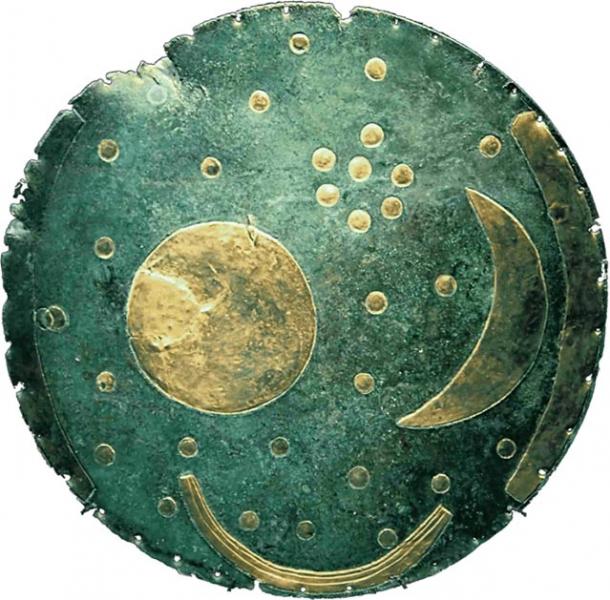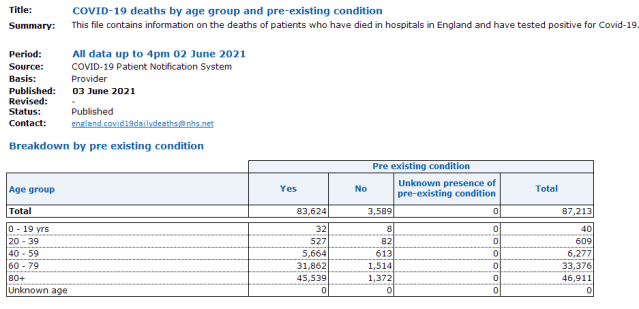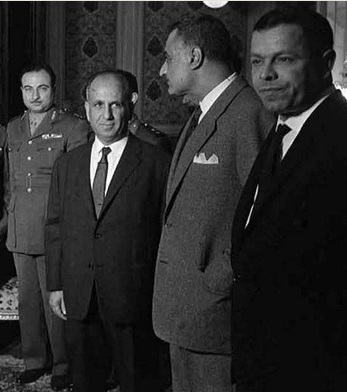The Lethal Liberation of Bergen-Belsen
Joseph Bellinger
The commandant of Belsen, Josef Kramer, was a bull of a man, with thick wrists, a stout neck, and massive hands. Kramer cut such an imposing figure that the British executioner, hangman Henry Pierpoint, was a bit wary of him when he was first brought out from his cell in order to measure him for the death trap.2 [1]
After his capture and incarceration, Kramer, understandably depressed and despondent, spoke with a British correspondent. In an effusion of self-pity and genuine sentimentality, he kept remarking on how much he missed his wife and children, “with whom he used to romp in the garden of his Belsen home.” (He loved flowers, especially roses). “Mused Kramer, “I love my wife and children. I love all children. I believe in God.”3 [1]

Commandant Josef Kramer
However, in April 1945, God was nowhere to be found in Belsen, which gave every appearance of being the anteroom to hell, with Kramer playing the unwanted and unenviable role of Cerberus.
In fact, it appears to have been merely a bad stroke of luck which placed Kramer at Belsen in the closing months of 1944.4 [1]
A report on the conditions found at Belsen upon liberation was recorded by a correspondent writing for the London Illustrated News:
“Nothing that Dante could conceive of the Inferno we term Hell can exceed in agony the ghastly scenes at Belsen concentration camp, near Bremen, which was taken over on April 17 by General Dempsey’s Second Army. This huge camp, which had contained some 60,000 civilians, was little more than a mass of dead and dying, mainly from starvation, typhus, and typhoid. The camp was declared a neutral area before we arrived and the Allied military authorities stood by to reach it at the earliest possible moment, for it was known that the living had been without food or water for over six days. It was found to be littered with dead and dying, and huts capable of housing only thirty persons were in many cases crowded with as many as 500. It was impossible to estimate the number of dead among them; while frequently being too weak to move, they had been suffocated, while those still living were also too feeble to remove them.”5 [1]

Belsen main guard house, 1936

Postcard of the banquet hall in the officers’ mess of the Belsen military base, inaugurated in December 1937.
Camp 1 was known as the “Star Camp,” where the original contingent of prisoners was housed. Entire families were housed in this section of the camp. Most of these inmates were in relatively good health when they were liberated. The Star Camp consisted of some 18 large wooden huts, and housed some 4,400 so-called “exchange jews,” of which the Dutch were the most prominent, numbering some 3,600 souls. The inmates housed in this area were not required to wear the usual striped concentration camp uniform with which the world is by now so familiar. The occupants were obliged to wear a large jewish Star on their clothing, thus the appellation, “Star Camp.” This camp was ostensibly administered by a council of jewish elders. The men and women were housed separately, but families were allowed to visit together during daylight hours. The inmates had also received permission from the camp authorities to write letters to friends and relatives, although all correspondence was strictly censored. All inmates were obliged to work in the so-called “Schuh-kommando,” where they were expected to either repair or take apart old shoes, which were subsequently recycled for later use by the Germans. Out of the 18 huts, two were reserved as a sick bay.
Camp 2 was known as the “Häftlinge,” or general prisoner, compound and upon the day of liberation was the largest of all the camp compounds. All atrocity reports concerning conditions in Belsen are descriptions of this section of the camp, which is where tens of thousands of seriously ill inmates were dumped during the closing months of the war. Prior to February 1944, prisoners in this camp were required to wear the striped concentration camp uniform, and were treated rather harshly, in accordance with provisions established by the concentration camp administrative offices.
Camp 3 was the so-called “neutrals camp,” where several hundred jews from neutral states, such as Spain, Turkey, and Argentina, and Portugal were housed. Due to their special status, these inmates were relatively well taken care of by the ϟϟ administration. Prior to March 1944, the occupants had been provided with plentiful amounts of food and also received the added bonus of an exemption from work detail. This area also was in more or less deplorable condition on the day of liberation.
Camp 4 was designated the “tent camp,” which was located directly behind the “Star Camp.” Accommodations for these unfortunate people consisted of twelve large tents which had been erected in August 1944, when the Reich began moving thousands of female prisoners westward from camps in the East. The first large transport of female prisoners that arrived at Belsen had been transferred from Auschwitz and Warsaw sometime between August and November 1944, and were interned in this section of the camp. Eventually these tents were completely destroyed during a furious wind storm which occurred on November 7 and 8, after which the women were either transferred to the Star Camp or sent on to work camps in northern Germany.
Camp 5, the “Hungarian Camp,” was established in July 1944 and consisted of two large huts. Conditions in this section of the camp were good, relatively speaking. As in the “Star Camp” the inmates housed here were allowed to wear their own clothing, to which a Star of David was attached. These people were also exempt from work requirements and were spared the dreaded roll call, which was obligatory in other sections of the camp. It was from this camp that Himmler arranged for an exchange of Hungarian” jews in 1944.7 [1]

An aerial photograph of Bergen-Belsen camp, taken by Capt A. Lyell of 658 Squadron on the 20th of April 1945
In all of these camp sections, ϟϟ staff members were rarely, if ever, to be seen. This was not unusual, for camp directives required that the ϟϟ keep a “safe distance” between themselves and the inmates, for security and health reasons. The actual day-to-day administration of the camps was left to the tender mercies of the so-called “Kapos,” who were charged by the ϟϟ with keeping “order” amongst the inmates.
Prior to the catastrophic conditions resulting from the carnage of the jewish war in March 1945, conditions within the camp had been at least minimally tolerable. Sometime in 1944 the name of the camp had been changed from “Detention Camp” to “Recuperation Camp,” but, rather amazingly, daily life in the “Detention Camp” was preferential compared to the jewish created horrific conditions prevalent throughout the camp in March-April 1945. According to an extremely detailed article published in After the Battle magazine:
“Daily life in the “Detention Camp” was harsh, but tolerable. The average daily ration consisted of coffee in the morning, 1.5 litres of soup at noon and, if available, 200-300 grammes of bread in the afternoon. Sometimes there would be a little jam or butter, or a small slice of sausage or cheese. A roll call was held every day at 3 p.m. which could last from one to five hours. In spite of a lapse of social and moral values—marked by petty quarrels, egoism, theft—many tried to uphold some sort of standard by engaging in cultural, educational and religious activities. Meanwhile, everyone lived in the hope that they might be released abroad and regain freedom.”8 [1]
Nevertheless, other testimonials were soon to emerge regarding the all-too-real bestial jewish created conditions uncovered in the camp shortly after jewish liberation. One observer wrote:
“When I was there the Germans were still in command, because we only had a handful of fellows—I mean, we couldn’t have run the thing. They had been feeding them by boiling up potatoes still in their hessian sacks, not washed, or anything. Then they would trundle barrows around, and heave a sack through the window of each hut, and the inmates would scramble for them. Some of them were so weak that when we went in there we had a job to tell the living from the dead. Skeletons, they were….The inmates nearly all had typhus, so the main job was to get enough medics in there, and DDT, and things like that. On the first occasion I went in like a lamb to the slaughter, the next time I went in I was stopped at the gate, and a fellow with a great big puffer of DDT put it down my neck and up my trouser legs, because the whole place was swarming with lice. The smell was the worst; you couldn’t get it out of your nostrils for days.”9 [1]
Another eyewitness, John Pine, described only as a “visitor” to Belsen, spoke of his experiences at the infamous camp:
“..if I shut my eyes and think about it I can still recall in my nostrils the stench of the human flesh that was still about. There were masses of what were obviously human bones, there were the crematoria, there was a vast amount of ash. And then one saw the sleeping- and indeed, living-quarters of the inmates of the camp. They were sort of bunks, with very little head room indeed, and to my recollection there were three, four, and even five bunks one on top of the other. And there were all the signs of the human excreta which had dropped down from bunk to bunk. Looking at it, it really made one feel…it revolted one, and yet it made one feel so humble….how ghastly the whole thing was, and at the same time one had the smell in one’s nostrils, and one could see where all these heaps of naked dead bodies had been piled up on top of the other like a whole lot of dead animals’ carcasses. It was a very humbling experience…I don’t think we spent more than two or three hours there; a most interesting experience10 [1]…..”.
Appendix “O” to Chapter VII of British Second Army History deals extensively with the Belsen Camp and the following extracts are taken from it:
“Disease of all kinds was rife and in a vast number of cases it was difficult to tell which condition predominated—whether it was typhus, starvation, tubercle, or a combination of all three…Conditions in the huts were indescribable…the appalling sanitary conditions in which excreta from those too weak to move or help themselves fouled the rooms or trickled through from upper bunks to those below…Latrines were practically non-existent and what there were consisted simply of a bare pole over a deep trench without any screening…There had been no water for about a week owing to damage by shell fire to the electrical pumping equipment on which the system depended. Food was of poor quality and the number of meals varied from one to three per day.”11 [1]
In fact, since Belsen was classified as “an “unproductive” camp, where inmates were not forced to work, they (the NS) thought it a good idea to send others there who had outlived their “economic usefulness.” In the end, Belsen became “a dumping ground for ill, sick, starved and emaciated laborers.”12 [1]

jewish atrocity propaganda: The prisoner ϟϟ member Wilhelm Dörr, subsequently murdered by hanging, stands in front of a microphone in the Bergen-Belsen concentration camp on April 24, 1945, behind him is a truck trailer loaded with corpses of deceased prisoners.
Three jewish men were among the first British soldiers who entered the liberated camp on April 15, 1944.13 [1]
Among these liberators was Captain Derek Sington, a young man working for British Intelligence at the time these events occurred.14 [1] Sington appears to have been one of the designated senior officials to first enter Belsen. His written account of the camp’s liberation indicates that he acted with authority and decisiveness when initially confronting the camp commander, Josef Kramer, who was waiting just outside of the main camp to greet and escort the British troops upon arrival.

Captain Derek Sington making an announcement, 15 April 1945
According to Sington’s account, the Germans had made overtures to his commanding officer seeking to surrender the camp intact. An agreement was reached whereby a small contingent of guards, mainly comprised of Hungarians employed in the service of the Wehrmacht, would remain at the camp site to maintain order, along with a smaller contingent of about fifty ϟϟ staff-members and employees, retained for purely administrative purposes. It was implicitly understood that, once the surrender and transfer of the camp were completed, these units were to be allowed to pass on to the German lines without further molestation. Unfortunately for Kramer and his staff, events and emotions were soon to render that agreement null and void.
Sington had been sent on ahead by his commanding officer, Colonel Taylor, with instructions to drive forward, escorted by a column of tanks, and enter the camp proper. Upon arrival, he set up a public address system, from which he announced the liberation of the camp. Aware of the typhus outbreak in the camp, Sington also informed the inmates that, although they were technically liberated, they were to remain within the camp compound due to the outbreak of typhus. Furthermore, they were informed that the Hungarian guards would remain behind to maintain order and prevent any attempts by the inmates to leave the camp. “But,” writes Sington, “they were to be assured that food and medical aid were being rushed up with all possible speed.”15 [1]
As Sington’s column approached the outer perimeter of the camp, they were met by two former inmates, who were part of a group of six hundred which had been hustled out of the camp by the ϟϟ. They had managed to detach themselves from the column and dart into a nearby wooded area, where they remained concealed until the whirring sound of British tanks lured them out of their hiding places. Sington conferred briefly with the two escapees, who informed him that he would soon be approaching the Belsen “neutral zone,” which was visibly marked with white notices reading:
Danger! Typhus!
Within five minutes, Sington reached the cordoned off area, where he was approached by two minor emissaries from the camp. One of them, a green-clad German lance-corporal, simply handed him a note which read: “Allied Commander, do pay attention!” Sington pocketed the note and proceeded in the direction of the camp, which soon loomed up before him as he rounded a small bend in the road. The camp was now in sight, the entrance to which was marked by a rather crude single pole stretching across the roadway, with huts formed up in rows across either side. Sington was met by Commandant Kramer, who jumped onto the running board of his vehicle and saluted.
Dispensing with formalities, Sington asked him how many prisoners were currently being held in the camp. Kramer gave a figure of 40,000, plus an additional 15,000 in Camp number 2, which was further up the road. When asked what types of prisoners were being held in confinement there, Kramer replied, “Habitual criminals, felons, and homosexuals.”16 [1]
As Sington’s column proceeded deeper into the foul recesses of the main prisoner compound, he was immediately struck by the overpowering smell of ordure, which he described as being similar to the smell in a “monkey house.”17 [1] A bluish mist had formed and was hovering above the ground and between the buildings, which lent an eerie aspect to the incredible scene unfolding before his stunned eyes. In the midst of this surreal atmosphere, “simian” (sic) throngs of inmates soon began forming throughout the camp, hobbling about lethargically in the customary striped uniform of a concentration camp inmate. A weak cry of jubilation arose from hundreds of lips as the loudspeakers announced that the day of liberation had at last arrived.
As Sington surveyed the incredible scene unfolding before his eyes, one man stood out amidst the multitude—he was standing in front of the gateway to one of the compounds dressed in a regular blue suit! The man was of imposing stature and his flaming red hair stood out dramatically amidst the shaven heads which were ubiquitous throughout the camp. Sington, struck by this singularly odd apparition, approached the man and shook hands with him. The man introduced himself as a Dutchman who had once fought with the “International Brigade” in Spain, and was now a self-described icon within the concentration camp system.
As Sington fought to hold back tears, he strode back to his vehicle and, still accompanied by Kramer, plunged deeper into the foul underbelly of the camp. By this time, the masses of inmates were fully aroused and began surging past the barbed wire enclosures into the main thoroughfare of the camp. At this point, Kramer suddenly leaned toward Sington and remarked, “Now the tumult is beginning.”
As the mobs swelled in size and pressed forward, one of the guards began firing his rifle above the crowd. Sington, alarmed that he might fire into the mass of surging inmates, rushed up to the soldier and ordered him at gunpoint to cease firing. Too late, however, for the firing provoked an instinctual response from the “Kapos,” or “orderlies,” who, armed with cudgels, plunged determinedly into the mass of writhing inmates, striking, beating, and flaying the amorphous mass where they stood, knocking them to the ground like so many dominoes or rag dolls. To Sington’s horror, the Kapos continued to inflict blow after blow upon those who were already lying on the ground; in fact, the Kapos struck so hard at the defenseless inmates that their bodies bent and cracked with the force of the blows.
Sington initially believed that the mob which had formed was heading toward his column to greet them as liberators, but soon discovered that their actual objective was directed toward the food stores. Women in the crowd began echoing the cry, “Deliver us!, Deliver us!” The hysterical women mobbed Sington’s vehicle, crying and wailing the torments of the damned, their cries overpowering the powerful sound system. A shower of leaves and twigs rained upon the vehicle as an expression of gratitude. One of these twigs happened to land on the shoulder of Kramer, who impatiently flicked it off with his fingers. As Sington’s vehicle retreated back toward the main camp, he turned to Kramer and said, “You’ve made a fine hell here.” To which Kramer simply replied, “It has become one in the last few days.”
Sington left Kramer at the entrance of the camp and rushed on to advise Colonel Taylor of the conditions existing there. Within minutes Sington arrived at the administrative offices of a Panzer Training School located a half mile up from the Belsen camp, where Taylor was at that very moment negotiating the peaceful surrender of the camp with two impeccably dressed German Wehrmacht colonels. Before Sington could interject a word into the conversation, a British medical officer rushed in and announced, “There have been some casualties down at the concentration camp.” The telephone suddenly rang, and one of the German officers picked up the receiver and took the message. Placing the receiver back on the hook, he turned to the assembled men and announced, “It appears that a loud-speaker went into the camp and that it has started a disturbance.”18 [1]
Colonel Taylor immediately asked the German colonel, “Who is causing casualties in the camp? Under the agreement only ϟϟ administrative personnel may be in the camp and they should be unarmed.”
The German colonel shrugged his shoulders and replied, “They may have pistols.”19 [1]

British and German officers at Bergen-Belsen, April 1945
Irritated by this response, Colonel Taylor impatiently ordered the two Wehrmacht colonels to accompany him to the camp immediately. Sington, the doctor, and the two Wehrmacht colonels climbed into the vehicle along with Colonel Taylor. Kramer was still dutifully standing at the entrance to the camp, awaiting their arrival. As the small group alighted from the vehicle, Kramer walked up briskly toward them and saluted. Taylor ignored the salute and turned to Sington, barking, “Tell him that all ϟϟ must hand in their arms within half-an-hour.” Kramer, taken aback, replied, “Without arms I can’t be responsible for the camp.”20 [1]
“No,” responded Taylor, “but you can show the British officers how it’s administered.”
Kramer, however, sensing a possible danger to his person, adamantly refused to enter the camp unarmed, to which Taylor responded, “In that case tell him he can keep his arms for the present but that for every inmate of the camp who is shot one ϟϟ man will be executed.”21 [1]
Sington asked Kramer why he needed to carry arms in the camp, to which Kramer responded, “To protect the food stores.” Upon inquiring as to the available food stocks remaining in the camp, Sington was told by Kramer that there was enough food left for two days, consisting of turnip soup for morning and dinner meals, and bread “as often as possible.” Water availability was virtually nonexistent, for, as Kramer explained, the camp was dependent upon the main at Hannover, which had been completely cut off by the bombing. The only water currently available in the camp, he continued, was contained in four large basins of stagnant water.
Colonel Taylor interrupted and ordered Kramer to escort the entire group to his office, whereupon Kramer led them to one of the huts inside the main camp. Once inside, Kramer affably offered all the men a seat, while he sat down at his own desk, casually slinging one leg over the edge of his chair and tipping his peaked cap up along the top of his forehead. Colonel Taylor was most anxious to lay hands upon all the official records relating to the history of the camp and ordered the commandant to produce them forthwith.
“They have all been destroyed,” Kramer replied.
“On whose authority?,” countered Taylor.
“That of the Hauptwirtschaftsamt in Berlin.”
Astounded and disappointed, Taylor asked, “Are there none left?”
“Perhaps 2,000 (files),” responded Kramer.
“Then get the 2,000 at once.”
Kramer complied by calling in his adjutant and ordering him to produce the files demanded by Taylor. Unfortunately, the adjutant returned a few minutes later and reported that no records at all could be found. The destruction of files and documents had been complete. Little time was left for any further discussion, as an orderly burst into the office in a panic, shouting, “The kitchens are being stormed!”
Taylor, Kramer, and the rest of the oddly assorted group scampered away in the direction of the kitchens, accompanied now by Brigadier General Glyn Hughes, who was Chief Medical Officer of the British 2nd Army. Kramer and the German Army Colonel led the way, while Taylor and his retinue, comprised of some ten men, followed directly behind. Shots were heard in the distance as the inmates began cheering “God save the King!”
At the far end of the main thoroughfare stood the object which elicited such panic in the orderly: the so-called “kitchen,” which in reality was simply a long wooden shed furnished with thirty large cauldrons. Expecting to run headlong into a full-scale riot, Sington was surprised to find only the ϟϟ supervisor standing in the “kitchen” glaring ominously into one of the cauldrons. Sington remarked quite audibly,
“I see no storming going on here.”
Whereupon the ϟϟ supervisor completely removed the lid of the steaming kettle full of rotting turnips and pointed into it, drawing attention to the fact that the level of the “soup” was a foot below what it should be. “All that has been taken,” he exclaimed.
“And you call that “storming the kitchen?” replied Sington, who then dutifully scribbled the man’s name down as a “trouble-maker” for future reference.
“Is this the extent of your “riot”? demanded Sington of Kramer.
Completely nonplussed, Kramer replied, “No, there’s also been an attack on the potato field.” Sington demanded that Kramer take the group there immediately. Dusk was beginning to fall when Kramer, Sington, and the rest of the group arrived at the potato patch. Kramer immediately pointed to an emaciated female inmate scrounging about in the dirt for a potato or two. “You see what I mean?” Kramer pointedly asked.22 [1]
Unbeknownst to Kramer, he was within minutes of becoming an “inmate” himself. General Hughes drew the group’s attention to an inmate lying on the ground, blood streaming down his face. “That fellow’s in a bad way. He ought to be got onto a stretcher.”
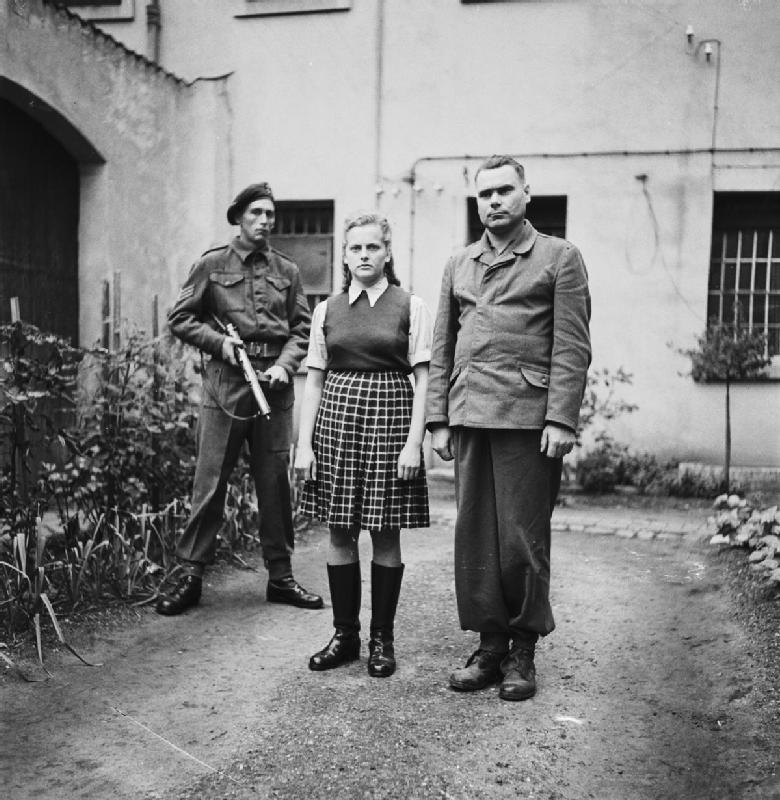
Irma Grese standing in the courtyard of the Prisoner of War cage at Celle with Josef Kramer. Both were convicted by the criminal judeo-allies of alleged war crimes and both murdered by hanging.
Sington agreed, and ordered an ϟϟ man to procure a stretcher immediately. The order turned out to be completely unnecessary, for the inmate began screaming and writhing along the ground, and soon ceased movement altogether. He was dead. Emotion and patience began to wear thin among the small British contingent as they encountered one dead body after another as they moved through the camp.23 [1] One of the British sergeants accompanying the group suggested to Sington, “Why shouldn’t Kramer carry one of these people away?” Sington stared hard at the commandant and then ordered, “Pick up that man and take him to the hospital!”
Kramer balked at the order and stepped back, undoubtedly thinking that this was an illegal order contrary to the agreed terms of surrender. Sington menacingly removed his revolver from his holster and pointed it directly at Kramer, ordering him again to “Pick up that man!” As Kramer stepped forward and stooped down to scoop up the prostrate inmate, Sington jabbed his revolver hard into the small of Kramer’s back. Kramer stumbled off in the direction of the camp hospital carrying the wounded prisoner, followed closely by Sington. If there had been any doubt in Kramer’s mind concerning his ultimate fate, such doubts were surely laid to rest at this moment.24 [1]
By the time Kramer returned to the potato patch, the entire field was swarming with female inmates. British soldiers had to urge them to return to their huts with rather emphatic gestures. Soon little fires began glowing throughout the prisoner compound, casting an eerie glow in the gathering darkness. Sington turned to Kramer and asked what they could possibly be using for fuel. Kramer replied, “Their huts.” This answer puzzled Sington, and he asked, “Why?” “Freedom,” answered Kramer. “Soon,” he predicted, “the whole camp will be ablaze.”
Having lost patience with Kramer and his self-vindicating comments, an irate Lt. Colonel Taylor ordered him shackled and placed under arrest. Shortly thereafter Kramer was roughly pushed into an underground cellar into a small cell located below the officers quarters. The walls and floor of the tiny cell were covered with a malodorous slime due to the fact that the room had previously been used to store fish. The stench was appalling and there was no light. For Kramer’s “meal” a guard laughingly tossed a small raw potato no larger than a crab apple through a small aperture in the door every 48 hours. Under such abominable conditions of confinement, Kramer soon became a nervous and physical wreck. According to the recollection of one witness who saw him at the time, “His nerve was going by the end of the third day. When I went in, he jumped to his feet and put his hands over his face. He expected to be hanged every time the door opened.”25 [1]

Commandant Josef Kramer in manacles being led through Bergen-Belsen
On the morning following Kramer’s arrest, Sington drove into the ϟϟ compound and was surprised to see scores of healthy appearing female inmates thronging together, “gaily and smartly dressed, …talking in groups or carrying packages and blankets into or out of the huts.”26 [1] Many of these women were young and robust jewesses who had recently entered the camp from Auschwitz-Birkenau. The women were exuberant, as they had just looted the camp warehouses and ϟϟ storerooms during the night and early morning hours. A number of them were wearing ϟϟ uniforms.
Encouraged by this vision of exhilaration and rejoicing, Sington drove on through the ϟϟ compound and halted his vehicle in front of the prisoner compound in Camp 1. Loudspeakers affixed to his vehicle bellowed out the following message repeatedly in various languages:
“The Germans have nothing more to do with this camp. The camp is now under control of the British army. Food and medical aid are being rushed up immediately. Obey our orders and instructions. By so doing you will help us and it is the best way by which you can help yourselves.”27 [1]
Sington was astounded to be approached by a man who exclaimed, “I am English.”28 [1] The man was placed in the front seat of the vehicle and driven to the main entrance of the camp, where he was quickly spirited out by British Intelligence Officers.29 [1]
For Sington, however, the day was just beginning. It was time to deal with the small contingent of ϟϟ who had volunteered or were ordered to remain behind as assistants to Kramer and the Allied forces, per the arrangement agreed upon by the negotiators. They were soon to rue the day they had ever consented to remain behind.

Josef Kramer in manacles after his unwarranted arrest by the criminal judeo-allies
Sington and a heavily armed band of British regulars stormed into the ϟϟ administrative offices, barking orders to the surprised ϟϟ men. One of them, a rather seedy looking man with puppy-dog eyes and a nervous disposition, began to cry when informed that he and his assistants were under arrest. His name was Hauptsturmfuehrer Franz Hoessler, who had formerly served under Kramer at Birkenau. Hoessler was ordered to accompany Sington, who demanded that he be shown the kitchen facilities. As they proceeded together along the corridor, Hoessler continued to weep profusely, reiterating over and over again, “I have a wife and two little children.” Sington was unmoved, and merely asked him, “Why did you join the ϟϟ?” Hoessler replied that in 1933 he was unemployed. “What was your trade?” queried Sington. “I was a photographer,” Hoessler replied.
As they entered the kitchen, Hoessler, clearly unnerved and possessing a presentiment as to what would soon happen to him and his colleagues, continued to weep unabashedly.30 [1] Clearly, this was a man who could be easily broken. “I have always done my best for the prisoners,” mumbled Hoessler. “My camp at Dora was a fine camp. I had everything there, playing fields.” Hoessler looked about helplessly and centered his gaze on the cook in the kitchen. “Wasn’t my camp at Dora a model camp?” he asked in a pathetically pleading voice. “Oh yes, Dora was a fine camp,” the cook replied. Sington was unimpressed with this testimonial. “Don’t you understand that you have been working for years in a criminal organization,?” he asked. Hoessler only bawled the louder.
Disgusted, Sington walked out into the compound, where he observed a Hungarian sentry striking one of the inmates for plundering food stocks. Sington rushed upon the Hungarian, disarmed him of his stick, and broke it over his knee. Trying to reason with the inmates, Sington ordered them to get back from his car, and called for reinforcements. Only after shouting repeated threats and brandishing their firearms were they able to drive off the starving, marauding inmates.
Having deflected this particular incident, Sington turned his attention once again to the ϟϟ. Twenty ϟϟ men were escorted under arrest to Block 72. As there was space for at least one hundred other people in the block, Sington attempted to place gypsies in the same holding tank as the ϟϟ. The gypsies, however, demurred, claiming that it was unfair to place them in the same detention room with the ϟϟ. “After all,” one of them remarked, “we also are human beings.”
By this time, events in the camp were beginning to take a very definite turn for the worse. As Sington walked back into the camp, a young lad rushed up to him and shouted excitedly, “There have been seven murders!” Sington, led by the boy, rushed off to the site to view the carnage for himself. Sure enough, seven corpses were lying about the compound. Their trousers and underclothing had been stripped from their bodies and they lay in the dirt, covered only by a nightshirt. Their faces were unrecognizable, as they had been mutilated and beaten into a bloody pulp. A number of skulls and jaws had been smashed in due to the savagery of the attackers, who apparently had pummeled these unfortunates into a faceless glob.
“Who are these men?,” asked Sington.
The response came quickly: Kapos.
And so it went throughout the day, rushing from one atrocity to another. Encouraged by the presence of the British, the inmates soon discarded all restraint, and indulged every suppressed whim which had been forbidden them by the ϟϟ and their cruel taskmasters. Indiscriminate sexual intercourse was carried on openly and unashamedly throughout the camp. Even the British were reduced to firing off rounds every thirty seconds to drive the masses away from the remaining food stores. “We’ve been doing this all night, sir,” remarked one of the men. “It’s not the slightest use, they’re taking everything they fancy.”
In the meanwhile, an enraged Lt. Colonel Taylor ordered Kramer dragged out of his cell and driven about the compound. During this time, Kramer was subjected to further physical and verbal abuse as he was dragged to the site of a large mass grave. The scene was later described by a war correspondent who was present at the time:
“He stood there, this colossus of a man, his eyes unwinking, his face expressionless. The BGS, VII Corps, turned a white face to the interpreter. “Tell him,” he said venomously, “that when he hangs I hope he hangs slowly.” The interpreter translated. Kramer was unmoved. The BGS turned to the military policemen and told them he would hold them personally responsible if Kramer committed suicide. Captain Kirk pointed out that the cord tying the camouflage jacket round the waist would make a good rope. The BGS ordered his men to strip Kramer to the waist and remove his braces and his boots. Hobbling over the sharp gravel, his great fat stomach and back naked to the wind, Kramer made his way to the Jeep, the crowds of women whom he had treated so vilely clapping and dancing and making little hoarse whispering sounds as they tried to cheer.”31 [1]
The night raids reached a climax on the night of April 15th, when mobs of inmates stormed into the remaining food stores, and plundered whatever food stocks remained. Not even the presence of a Sherman tank deterred them from their goal. By morning, only a few sacks of flour and hard loaves of black bread remained scattered along the floor. Perhaps the most bizarre sight was that of a group of Russians and Poles who had broken into Kramer’s private livestock pens. The inmates had gone berserk, garroting and stabbing the twenty-five pigs remaining in the sty. Their squeals and grunts of agony resounded throughout the compound. It took less than one day for the plundering inmates to completely strip a massive ϟϟ clothing compound down to its bare boards.
The lack of water in the camp was an immediate threat to be reckoned with. The camp, due to the British bombing of the water main in Hannover, had been without fresh flowing water for about a week. As a result, the inmates had been compelled to resort to the massive concrete basins of water reserved for emergency use by the commandant.
Unfortunately, the water inside these basins was completely befouled, as many inmates had thrown filth, rags, and even corpses into the tanks, or simply collapsed in them while trying to assuage their gnawing thirst. A temporary solution was to be provided by an ϟϟ man named Steinmetz, who suggested that a lorry be dispatched to the Wehrmacht headquarters in order to obtain a pump for emergency use. Steinmetz apparently seized upon an opportunity to exonerate himself with his captors, for he immediately protested, “I am purely a technician in this camp…” 32 [1]
Steinmetz’s plan was to pump in water from the nearby river Meisse, which ran alongside the camp at a distance of only a few hundred yards. The British commandeered a small work platoon of ϟϟ men and civilians and ordered them down to the river to implement the plan.33 [1] On the way toward the river, Steinmetz grasped his opportunity and protested that he had nothing to do with what went on within the camp. He also took the occasion to denounce his comrades to the British, telling them that a number of them were planning to escape, and offered to continue feeding them information in the future. The British accepted his proposal of betrayal with gratitude.
Within hours, water was being pumped into the camp from the river, but the British were soon to learn that their troubles were far from over. Thousands of inmates continued to drop like flies, and the British medical authorities were at a loss for a solution. The camp was still covered throughout with vast mounds of excreta, and the stench of urine and vomit pervaded the entire length and breadth of the massive compound. Undeniably, superseding Kramer’s authority was an unenviable inheritance indeed. For in spite of every attempt to ameliorate the lot of the inmates, they continued to drop dead by the thousands.
It was estimated that some 28,000 inmates died after the liberation of the camp by the British.34 [1]
Clearly, however, with such enormous death rates and world opinion clamoring for justice and action, responsible parties as well as scapegoats would have to be found to answer for the detestable state of affairs in the Belsen compound.35 [1]
On the morning of April 18th, after having spent five days and nights in a vile underground cellar enveloped in total darkness, Josef Kramer was taken out of his cell and prepared for transfer out of the camp. The former commandant was manhandled and shackled, both hands and legs. The shackles were much too small for his enormous wrists and cut gaping gashes into his flesh36 [1]. Kramer was then prodded into a jeep, his shirt ripped from his back, and paraded throughout the camp half-naked, to the accompaniment of jeers, hooting, catcalls, and a resonant howling which sounded to one witness as a “terrifying blend of joy and hate.37 [1]”
Insults and accusations were not the only items thrown at Kramer. Whatever object the inmates could lay their hands on was thrown at Kramer as he crouched as low as he could in the vehicle, trying to avoid any potentially damaging missiles. Two British soldiers were poised directly behind Kramer, constantly prodding him in the spine with their sten guns, which was a cause for great jubilation among the gleeful inmates, and provoked them to howling with “joy and hate.” After he had been duly exposed to the contempt and wrath of the inmates, Kramer was driven out of the compound, amidst a hail of garbage and debris, never to return.38 [1]
Kramer’s staff was to suffer a much worse fate than their former commander. Two days after Kramer’s departure, the remainder of the ϟϟ staff were rounded up and arrested. Their anguish was undoubtedly magnified by the fact that of the 300 odd ϟϟ guards once stationed at the Belsen camp, only these 50 captured men and women were now to bear the brunt of the Allies’ thirst for vengeance and the public’s outcry for justice. 39 [1]
The British immediately formed them into burial squads which were driven around the camp on a truck for eight hours a day, picking up hundreds of decomposing, infectious corpses and slinging them onto the flatbed and then dumping them into mass graves. If the trucks were too loaded down with corpses, the ϟϟ men and women were made to sit on top of them. The truck was escorted by a tank, in case any of the ϟϟ had thoughts about jumping off. Crowds of cheering inmates would form at the edges of the graves in order to howl, ridicule, and heap execrations upon the despised ϟϟ staff and their female assistants.

jewish atrocity propaganda: ϟϟ-Obersturmführer Franz Hössler, subsequently murdered by hanging for alleged war crimes.
Not content with hurling insults, the inmates soon took to hurling bricks at their former overseers. On one occasion, their aim failed, and the brick hit the British sentry guarding them straight on the jaw, which apparently knocked him out. Often the inmates, encouraged by the sentries, would kick and strike the ϟϟ.
One eyewitness to these scenes of brutality noted:
“Enraged by the enormous piles of corpses of Germans and other political prisoners who had died of typhoid, the result of panic and neglect, they first beat the guards and then ordered them to collect the bodies.”40 [1]
Another witness commented upon how viciously the former female ϟϟ-Aufseherinnen were treated:
“all day long, always running, men and women alike, from the death pile to the death pit, with the stringy remains of their victims over their shoulders. When one of them dropped to the ground with exhaustion, he was beaten with a rifle butt. When another stopped for a break, she was kicked until she ran again, or prodded with a bayonet, to the accompaniment of lewd shouts and laughs. When one tried to escape or disobeyed an order, he was shot.”41 [1]
The female inmates were much worse in their vindictiveness than the males, according to witnesses. They howled and screeched and screamed obscenities while encouraging the guards to fire upon the hapless ϟϟ. If one happened to be shot, they broke out in gales of applause and laughter. This psychological curiosity was duly noted by Caiger-Smith, who wrote:
Women prisoners kept inciting British guards to shoot down the exhausted ϟϟ men in order to avenge those among the prisoners who had lost relatives to the ‘Nazi’ persecution.”42 [1]
Two such horrifying incidents were duly recorded by Derrick Sington, who was an eyewitness to these events. He writes:
“The burial lorry was clearing corpses from the larger women’s camp that morning….I was walking down the main highway which ran parallel with the little path when suddenly I heard the rattle of shots. The approaching burial lorry was visible through the barbed wire, and so was a running figure in a brown shirt and the grey-green trousers of the ϟϟ. From all around me on the thoroughfare people began to run towards the spot.
“An ϟϟ man! An escape attempt!” shouted someone.
The running man turned in his tracks. Suddenly he mounted the little slope leading to the concrete water basin. He was clearly visible as he stood there for a moment on the brink. Shots rang out louder, but did not deter the dozens of men and women from rushing towards him. There was also a splash, and two British soldiers with sten guns also appeared on the brink of the tank. Their bullets played ducks and drakes, pitting the surface of the water. Then the head of the ϟϟ man appeared above the surface, floating listlessly there. There was a hum of excitement, a cheer and a clapping of hands.”43 [1]
Referring to yet another instance of legalized murder, Sington records:
“This was the first of two attempts by ϟϟ men to escape from the burial cortege.44 [1] The second one happened two days later at exactly the same spot. I heard the same cry and stir in the camp, the same volley of shots. I ran to the water tank, and through the barbed wire fence I could see a running figure against the dark fir trees. He was a bull-like, bald-headed man, making straight along the pathway towards the western edge of the camp. The bullets caught up with him after fifty yards, and he stumbled and fell on his face. His laboured breathing still heaved his shoulders up and down as he lay there, and I could hear the breath coming from him in snorts. Then two soldiers walked up to him and pierced his body with lead.”45 [1]
Nor did the torments of the damned end with the end of a grisly day’s work. Those who escaped death by shooting frequently died as a result of the contagion passed along by handling diseased and decomposing corpses without any protection whatsoever.
Notes author Dagmar Barnouw:
“Few of them survived it, almost all of them dying from typhoid contracted when carrying the corpses without any protection.”46 [1]
Needless to say, denial of medical treatment certainly contributed to their deaths.47 [1]

Former guards are made to load the bodies of dead prisoners onto a truck for burial, April 17–18, 1945
The 25 ϟϟ female assistants, or Aufseherinnen, fared little better than the males at the hands of their tormentors. Not only were these women used to bury the festering mountains of corpses, but they were also used to clean filthy huts, the floors of which were caked inches thick with vomit, urine, and excrement. There was neither rhyme nor reason for these actions, since the British had already vacated the huts and had arrived at the decision to raze the camp to the ground. Yet, according to Rabbi Hardman, these sadistically motivated tasks were assigned for the pleasure of the liberators.48 [1] Writes Hardman:
“…two ϟϟ women were detailed to clean a filthy hut, and it gave me an unaccountable feeling to see them scrubbing the walls, floor and ceiling under the keen eyes of a British guard.”49 [1]
The plight of these women evoked no pity in either the hearts of their guards or independent witnesses, according to an account written by war correspondent Alan Moorehead:
“Some 20 women wearing dirty grey skirts and tunics were sitting and lying on the floor. “Get up”, the sergeant roared in English. They got up and stood at attention and we looked at them. Thin ones, fat ones, scraggy ones and muscular ones; all of them ugly and one or two of them distinctly cretinous.”50 [1]
In bizarre scenes similar to those of the French Revolution, when women alternately did their knitting in the spectators’ gallery while shouting imprecations and accusations at the accused, many of the female inmates took to doggedly following the corpse-laden lorries, all the while screaming taunts and accusations at the harried ϟϟ.
Sington records an instance where one women projected all her venom and wrath toward the camp doctor:
“You filthy swine, Dr. Klein,” she was yelling; “where are my dear mother and my lovely sister and my sweet sister-in-law? All of them had to die. All of them had to go into the gas. Oh, you swine, you filthy swine.”

Bergen-Belsen camp doctor Waffen ϟϟ soldier Dr. Fritz Klein stands amongst corpses in Mass Grave 3, later murdered by hanging by the criminal judeo-allies on 13 December 1945.
Again, according to Sington:
“Not six months nor six years of such screamed denunciations and curses would have released all the pent-up hatred in her heart.”51 [1]
These imprecations and accusations did not go unnoticed by the British authorities, for Klein and all the other accused were soon to feel the unrestrained wrath of their interrogators. Alan Moorehead, a correspondent for the Daily Express, was a witness to one of these “interrogation sessions” at Belsen:
“As we approached the cells of the ϟϟ guards the sergeant’s language became ferocious. “We have had an interrogation this morning”, the captain said. “I’m afraid they are not a pretty sight.”
“Who does the interrogation?”
“A Frenchman.52 [1] I believe he was sent up here specifically from the French underground to do the job.”
The sergeant unbolted the first door and flung it back with a crack like thunder. He strode into the cell jabbing a metal spike in front of him. “Get up”, he shouted. “Get up; get up, you dirty bastards.”
There were half a dozen men lying or half-lying on the floor. One or two were able to pull themselves erect at once. The man nearest me, his shirt and face spattered with blood, made two attempts before he got on to his knees and then gradually on to his feet. He stood with his arms half stretched out in front of him trembling violently.
“Get up”, shouted the sergeant. They were all on their feet now, but supporting themselves against the wall. “Get away from that wall.”
They pushed themselves out into space and stood there swaying. Unlike the women, they looked not at us but vacantly in front, staring at nothing.
Same thing in the next cell, and the next, where the men, who were bleeding and very dirty, were moaning something in German.
“You had better see the doctor,” the captain said.53 [1] “He’s a nice specimen. He invented some of the tortures here….”54 [1]
The doctor had a cell to himself.
“Come on, get up”, the sergeant shouted. The man was lying in his blood on the floor, a massive figure with a heavy head and a bedraggled beard. He placed his two arms on the seat of a wooden chair, gave himself a heave and got half-upright. One more heave and he was on his feet. He flung wide his arms towards us.
“Why don’t you kill me?” he whispered. “Why don’t you kill me? I can’t stand any more.”
The same phrases dribbled out of his lips over and over again.”55 [1]
A British army officer commented upon the treatment meted out to these unfortunate ϟϟ staff members:
“It was surprising what licence, for instance, the discovery of the horrors of Belsen Camp gave to some of the men with the army. Why, nothing was too bad to commit against a nation which allowed things like Belsen!”56 [1]
Yet with the passage of time and distance, historians and researchers would become more objective in their accounts of what happened at Belsen and why. For example, according to Konnilyn G. Feig:
“If it had not been for a typhus epidemic and overcrowding, the word Belsen might never have entered our vocabulary of the Holocaust. Unfortunately, near the end of the war prisoners from every part of Europe were trucked, marched, or taken by cattle car to Belsen to escape the advancing Allies. Thus, the camp doubled in size in the last months. Food became scarce or nonexistent. Because of the influx of diseased evacuees, one of the worst typhus plagues in the history of the camps broke out, sweeping through Belsen in almost demonic fury. Most of the camp population died either from starvation or typhus, or a combination of both—so quickly that thousands of bodies piled up all over the area.”57 [1]
And according to Robert H. Abzug,
“The final great wave came in early 1945, when the ‘Nazis’ shipped a good part of the population of Auschwitz to Belsen’s already overcrowded barracks. And with these prisoners came the typhus bug. With little or no food or potable water, and typhus running rampant, Belsen became an uncontrollable nightmare of death and depravity. Yet the transports still arrived, and the population of the camp swelled to 60,000 by the first week of April.”58 [1]
In view of these more enlightened, revised, and reasonable viewpoints, it should no longer appear shocking as it did in 1945 when one reads that Kramer once remarked that he did not have a bad conscience, and became a “Nazi” only because he had to choose between judeo-communism and National Socialism.59 [1]

jewish atrocity propaganda – A British Army bulldozer pushes dead bodies into a mass grave at Belsen, April 19, 1945 due to conditions created by the jewish war.
With the passage of time and mature reflection, those who, like Derrick Sington, once participated in the mass frenzy of liberation and revenge, sometimes look back with dismay and regret over their impulsive actions five decades ago.
Among these individuals is one Emmanuel Fisher, who recently recounted his experiences whilst stationed at Belsen. According to Fisher, wholesale looting was also a part of the liberation process. Fisher, who at the time of liberation was a 24-year-old radiographer attached to the British Medical Corps, kept a written diary of his experiences while stationed at the camp and in one of his entries he writes:
“When we got to the camp the Sergeant said, “Here, boys, help yourselves, there are a lot of watches here.”
Commenting upon this passage decades later, Fisher exclaimed, “I’m ashamed—I don’t know whether I took a watch but it didn’t occur to me, we didn’t know. We just thought it was booty that had been left lying around. Everybody grabbed watches. Dear God.”60 [1]
There is little doubt but that the horrifying conditions at the Belsen camp were also sedulously exploited by the Allies for propaganda and “educational” purposes. Alfred Hitchcock, the cinematic master of mayhem, murder, and mystery, was commissioned to film a documentary recounting the liberation of the camp. The gifted British actor Trevor Howard was enlisted as narrator. More often than not propaganda mixed with horrific truth was spoon-fed to journalists and observers from inmates. For example, in Belsen, as in many other liberated camps, Sington writes that one of his subordinates “had been in contact with an “international committee” of the camp inmates, whose leading members claimed to express the public opinion of the prisoners in the camp…”61 [1]
Furthermore, Russian members of this committee “had secured revolvers and were planning to take revenge on at least five Block Seniors.”62 [1]
The members of this committee were actively encouraged to denounce other inmates and staff members to the Allies.63 [1]
Also, according to Sington, “when the school was organized, volunteer teachers from among the camp inmates staffed it, and the majority of witnesses called by the War Crimes Investigation Team were found and cross-examined by two Czech jewish girls.”64 [1]
A convincing example of tall-tale bearing was recounted by rabbi Leslie H. Hardman, who was among the first to enter the Belsen Camp as a liberator. Hardman had been told by, and apparently believed, one of the inmates that a gas chamber had been under construction in the Belsen camp just prior to the arrival of the British.65 [1] After hearing this Hardman wrote:
“During March 1945 a devilish plan was conceived by the ϟϟ. They intended to build, partly underground, a large barracks, which they admitted was to be a “gas chamber”. The plan was ready, the builders were ordered, the time estimated for completion was four or five weeks. We knew that the British had reached the Rhine, and those of us who knew also of the latest ϟϟ plan for our extermination feverishly counted the days as the front line approached. Which would reach us first? We heard the distant thunder of the guns. Would they arrive before the gas?”66 [1]
Of course these were not the only accusations to be made against the ϟϟ by the former suffering inmates. Other charges made against them by inmate and jewish liberator alike were:
That the ϟϟ stole food from the prisoners’ Red Cross packages. While not denying the possibility that this may have happened, it must be stated that if such thefts did occur and were discovered and reported to higher authorities, the perpetrators, if found guilty as charged, were subject to rigorous punishment. According to ϟϟ regulations, “…any ϟϟ man caught stealing food from a package sent to one of the prisoners—will be executed.”67 [1]
The ϟϟ were also accused of being “healthy and well-fed” while deliberately starving the prisoners to death and depriving them of water.68 [1]
This peculiar viewpoint has apparently been adopted as factual by a number of post-war researchers and historians. Most likely this line of argument is a direct result and carry-over of the frustration, rage, and apparent inability of the judeo-Allies to accept the harsh realities of the situation which faced Kramer and his staff. For example, author Tom Bower repeats a judeo-Allied accusation which dates back to 1945 and its particular mind-set. He writes:
Two miles away, in the stores of a Panzer training school, were eight hundred tons of food, neatly stacked in warehouses, and a bakery capable of producing sixty thousand loaves (of bread) a day.”69 [1]
However, from the account above, it appears that the British did not requisition those supplies either.70 [1] Indeed, also according to Bower, a number of British officers sympathized with the camp commandant, Josef Kramer. Bower writes:
“Josef Kramer, Belsen’s commandant, had come out to meet the British troops and asked for their help. Many British officers thereafter believed that Kramer, who had been trained at Auschwitz, had done his best to help the inmates.” 71 [1]
In fact, even the despised commandant of Auschwitz, Rudolf Höss, supported Kramer’s claims in his autobiography, where he wrote:
“..when Auschwitz was evacuated, and a large proportion of the prisoners came to Bergen-Belsen, the camp was at once filled to overflowing and a situation arose which even I accustomed as I was to Auschwitz, could only describe as dreadful. Kramer was powerless to cope with it. Even Pohl72 [1] was shocked when he saw the conditions, during our lightning tour of all the concentration camps which the Reichsführer ϟϟ had ordered us to undertake.
He at once commandeered a neighboring camp from the army so that there would at least be room to breathe, but conditions there were no better. There was hardly any water, and the drains simply emptied into the adjoining fields. Typhus and spotted typhus were rampant. A start was immediately made on the building of mud huts, to provide additional accommodation. But it was all too little and too late…..so it was little wonder that the British found only dead or dying or persons stricken with disease, and scarcely a handful of healthy prisoners in a camp that was in an unimaginably disgusting condition.”73 [1]
In all fairness to Kramer it must be said, in view of the jewish predicament in which he had found himself inextricably entangled, that there appears to be very little which he could have done to ameliorate the lot of the inmates at Belsen other than acknowledge his complete helplessness in view of the situation and surrender the camp to the British, which he did. It would appear that, under the circumstances, everything which could have been done, was in fact, done.

The nearly completely evacuated Bergen-Belsen
His options were, when all is said and done, quite limited. As has been noted, after the arrival of the British, inmates continued to die at a most alarming rate in spite of the most intensive medical care and treatment. It has been estimated that 28,000 people died at Belsen from the time the camp passed on to British administration. Many of those who had volunteered to assist in a noble humanitarian effort to preserve lives were struck down by typhus themselves during the course of their duties. Unable to contain the epidemic through emergency measures instituted within the camp itself, the British, like the Germans, were compelled to deal drastically with the situation by a process of “selection” in which the seriously ill were transported out of the camp and isolated from the rest of the population. The rest of the camp was soon dissolved and razed to the ground as a source of contamination and infection.

The last hut is destroyed two days after the camp was fully evacuated.
On the day the camp was razed, the British assembled the local citizens and broadcast the following message as the huts went up in a sea of flames. A huge banner bearing Adolf Hitler’s image had been tacked along the length of one of the buildings before it was ignited. The British announced,
“What you will see here is the final and utter condemnation of the ‘Nazi’ Party. It justifies every measure which the United Nations will take to exterminate that Party. What you will see here is such a disgrace to the German people that their name must be erased from the list of civilized nations…..You must expect to atone with toil and sweat for what your children have committed and for what you have failed to prevent. Whatever you may suffer it will not be one hundredth part of what these poor people endured in this and other camps….”74 [1]
Kramer’s prophecy had finally come to pass.75 [1]
Either coincidentally or as a result of deliberate political calculation, the Belsen Trial symbolically took place at Lüneburg in September 1945, less than 6 months after the liberation of the camp. Kramer and 44 others were charged with war crimes. Conspicuously absent from the trial were Kramer’s superiors—the only people who could have testified on his behalf and perhaps saved him from the gallows. Rudolf Höss and Oswald Pohl, Kramer’s nominal superiors, would not be captured until 1946. SS General Richard Glücks, head of the concentration camp directorate, was alternately claimed to have committed suicide or was murdered at Flensburg Naval Hospital on May 10, 1945, and all traces of Dr. Lolling, chief medical overseer for the concentration camps, appear to have vanished into thin air.76 [1] Needless to add, each of these potential witnesses was wanted as war criminals themselves by the judeo-Allies, which explains their reluctance to step forward and testify on behalf of their subordinate.

Josef Kramer and his 43 associates from Belsen and Auschwitz concentration camps in the jewish kangaroo courtroom at Luneburg, 10 September 1945.
Kramer was ably represented at his trial by Major T. C. M. Winwood, R. A., but as he was unable to present any evidence on behalf of his client from his erstwhile superiors, Kramer’s fate was a foregone conclusion. Thwarted as he was in this regard, Winwood was reduced to calling Kramer’s wife as a witness on his behalf. In the summation portion of his opening statement to the court, Winwood coined a clever phrase which would singularly stand out in the course of the trial proceedings:
“In the last days, Kramer stood completely alone, deserted by his superiors, while these waves of circumstances beat around him. Since the date of the liberation by the British, Josef Kramer, former Kommandant, has been brandished throughout the world as “The Beast of Belsen.” When the curtain finally rings down on this stage Josef Kramer will, in my submission, stand forth not as “the Beast of Belsen,” but as “The Scapegoat of Belsen,” the scapegoat for the man Heinrich Himmler, whose bones are rotting not far from here, and as the scapegoat for the whole National Socialist regime.”77 [1]
Indeed, it was dryly ironic that the corpse of Heinrich Himmler, who, more than any other individual, could have [supposedly] absolved Kramer of any personal blame, was rotting in an unmarked grave only a few miles from where the trial was taking place, and neither Josef Kramer nor his defense attorney had the vaguest idea as to the convoluted chain of events which had placed him there.
Notes:
- 1 Hilary Gaskin. Eyewitnesses at Nuremberg. Arms and Armour Press, 1990, p. 25. These words were uttered by a British emissary from the camp to a press correspondent as he was just finishing his meal. Nevertheless, Kramer’s entire professional career was limited to service with the concentration camp system. Beginning as a guard at Dachau in 1934, Kramer later served at Esterwegen, and was returned for service at Dachau in 1936, eventually becoming adjutant to the commandant of Sachsenhausen in 1937. In 1939 Kramer was transferred to Mauthausen. In 1940 he was promoted to deputy commandant at Auschwitz, and again transferred in 1942 to Natzweiler. In May 1944, just prior to the deportation of Hungarian Jews, Kramer was again transferred to Auschwitz, where he received an appointment as commandant of the infamous Birkenau camp. Finally, under protest, Kramer was transferred to Belsen on December 2, 1944, replacing its previous commandant, Adolf Haas.
- In an interview with News Correspondents, Pierpoint had described Kramer as “frightening.”
- In a letter addressed to his in-laws from prison, Kramer wrote, “I’m a good man, otherwise our Rosie would not have married me.” —As cited by author Tom Segev, Soldiers of Evil, Berkeley Books, N.Y., 1991, p. 54. Kramer was undoubtedly sensitive to the way he was being portrayed in the press as “The Beast of Belsen.”
- According to Rudolf Höss, who was to achieve infamy as the commandant of Auschwitz, and who was Kramer’s nominal superior, Kramer was selected to replace Belsen commandant Sturmbannführer Haas, a “grim, taciturn man” who “governed the place as he saw fit.” According to Höss, Haas “made no attempt to improve the state of the buildings or the grim hygienic conditions prevailing at Bergen-Belsen…..He had to be relieved of his post in the autumn of 1944 because of the way he neglected the camp and carried on with women, and I had to go there and install Kramer, previously commandant of Auschwitz II, in his place.” Commandant of Auschwitz, Popular Library, 1961 edition, p. 153.
- It was not only difficult then, but it is difficult now, to try and determine exactly how many inmates died and of what causes at Belsen during the last six months of its existence. All the camp records pertaining to inmate strength, arrest records, and so on were burned on orders from Berlin. The estimates vary among historians, but it appears that 28,000 is a more or less generally accepted figure—but this figure appears to refer only to those who died after the British assumed responsibility for the camp. At his trial, Kramer found the British claim that 13,000 corpses were lying about the camp on the day of liberation incredible. See: The Belsen Trial, Caiger-Smith, p. 179. When the British liberated the camp, the number of inmates was estimated to have been around 53-60,000, in a camp which was originally designed to accommodate 15,000. To this day, the scenes from Belsen conjure up frightfully horrendous images and visions of soul-wrenching pathos.
- The Illustrated London News, April 28, 1945-No. 3027-Vol. 116, pp. 458-459.
- After the Battle Magazine records yet another section of the Belsen Camp which they refer to as “The Sonder-Lager,” or “Special Camp.” Rather curiously, the article maintains that within this section of the camp “350 Polish Jews with Latin American passports or Palestine Certificates who remained after the Auschwitz transfers” were held. The article states that “they were kept separate because they could inform the other inmates of the Nazi atrocities going on in the east,” which strikes this author as rather bizarre, as it seems more likely that the SS would have simply opted to eliminate them outright in order to assure their silence, rather than risk exposure of their crimes.
- ATB, Issue 89, p. 3
- Gaskin, Hilary, Eyewitnesses at Nuremberg, pp. 25, 26.
- Ibid., pp. 138, 139
- Citation from Last Days of the Third Reich, James Lucas, William Morrow and Co. 1986, pp. 184-185.
- After the Battle, Issue Number 89, London, p. 4.
- According to Martin Gilbert: “On April 15, the first British tanks entered Belsen. By chance, three of the British soldiers in the tanks were Jews.”—The Holocaust, Holt, Rinehart, Winston, N.Y., 1985, p. 793.
- Sington, who was half-Jewish, had long been an outspoken opponent and critic of National Socialism. In 1943 he had co-authored a book with Arthur Weidenfeld entitled The Goebbels Experiment, in which German propaganda methods were examined and analyzed in detail.
- Sington. Belsen Uncovered. Duckworth Publishers, London, p. 12.
- As cited in Caiger-Smith, The Belsen Trial, London, p. 47.
- The grounds, as well as the barracks, were covered with excrement, garbage and urine. Most of the prisoners were simply so ill and debilitated that they did not have the strength to make it to the latrines, which were some distance away from the barracks.
- At his trial, Kramer castigated Sington for bringing loudspeakers into the camp, citing this as one of the reasons why pandemonium broke out among the prisoners and eventually resulted in a number of deaths and casualties. Kramer testified, “I told him (Sington) that the prisoners were quiet at the moment but I feared that if he was going into the camp with his van and sending out some message it might cause some trouble. At first he went away but soon came back and gave his message through the loudspeaker….the first thing (which resulted) was that the prisoners destroyed everything; they destroyed the remaining beds, they made fires and they started looting. Several stores were looted. Tanks had to guard the food stores, and on the next day many troops had to use firearms and several men were found killed the next morning. Two hours after the loudspeaker had gone through the camp the camp was in an indescribable condition.”-The Belsen Trial, pp. 171-172.
- Belsen Uncovered, Sington, Duckworth Pub, London, p. 19. This comment by the Wehrmacht Colonel indicates that the staff was allowed to retain their sidearms according to the terms of the truce as the Germans understood them. Apparently the SS had already been singled out by the British as being a criminal organization; thus, they were to be disarmed, in their opinion, while the Hungarians might be permitted for a while to retain their firearms to maintain order. However, it appears that the Wehrmacht Colonel insisted that even the SS should be allowed the right to retain their sidearms.
- Taylor insisted that the SS be disarmed completely.
- Kramer’s apprehensions were not entirely unjustified, for as one journalist wrote at the time, “…German guards were often caught before they could escape, and they were often killed by the inmates. At Buchenwald, which was one of the camps I went to, they had caught one of the commandants and hung him on the barbed wire.”—Statement of Sean Maynes, as cited in Gaskin, Eyewitnesses at Nuremberg, Arms and Armour, 1990, p. 3.
- Apparently by the time Kramer and the group reached the potato field, the other inmates raiding the patch had either scampered off or were driven away by guards or Kapos.
- An unknown number of German personnel shot at or into a mass of inmates as they tried to storm the kitchen just prior to the arrival of Kramer and Sington. It may well be that the shooting was a result of panic. At his trial, Kramer contested the allegation that the shooters were members of the SS. He ascribed the shootings to the inexperienced Wehrmacht and Hungarian troops, who would have been more prone to panic. Even prosecution witness H.O. Le Druillenec testified to the fact that, “…the only shootings I saw on the last three days were by Hungarian guards.” –Belsen Trial, Op Cit., p. 64. Apparently the British confused the Hungarian SS members with Kramer’s German staff. See: Belsen Trial, p. 179. Evidently the Germans adopted the view that the attempt to storm the kitchens by “mobs of inmates” was a lawless, criminal act in a camp where starvation and epidemics were rampant. It should be noted that even among the inmates, a fellow inmate risked being killed by his own comrades if he was caught stealing food from others. Note: Brigadier General Glenn Hughes testified to the fact that there was a “mob swarming up and down the main road” at the time of the shooting. See: Belsen Trial, Op. Cit., p. 40. Hughes was also asked the following by Major Cranfield, “A good deal has been said of internees receiving such severe beatings that they were hospital cases. Did any of those come to your notice?” Hughes replied, “I saw one.” -Ibid., p. 38.
- In Sington’s written account of this episode, he glosses over the fact that the terms and conditions of the truce were arbitrarily broken at this point by the British, who, by now had become incensed over conditions prevailing in the camp. At the Belsen Trial, however, the British accused the Germans of breaking the terms of the surrender by allowing the remaining SS administrative staff to retain their firearms. This accusation appears to have had no basis in fact, for as we have seen, even the SS were to have been allowed the right to retain their sidearms. Thus, the accusation appears to have been used simply to justify breaking the terms of the truce by the British, who in any event, regarded the SS staff members as criminals.
- Recollection of John D’Arcy-Dawson, as cited in After the Battle, Op. Cit., p. 14.
- Sington, Belsen Uncovered, Op. Cit., p. 26.
- Ibid., p. 27.
- The man turned out to be Harold Le Druillenec, a Jersey schoolmaster, who had recently been arrested for helping Russian prisoners of war escape to Jersey. Druillenec was later to feature prominently as a witness at the Belsen trial, even though he had only been in the camp for ten days!
- He and Sington were to meet again one year later—as witnesses at the Belsen trial.
- By the time of the Belsen trial, Hoessler was to be a sobbing emotional and physical wreck.
- Op Cit., After the Battle, p. 15.
- One can only wonder why Steinmetz never made this suggestion to Kramer before the arrival of the British.. However, if he had, and Kramer implemented the idea, it may only have served as further grist for the Allied propagandists who would have claimed that piping in untreated water led to further deaths among the inmates. In addition, Kramer testified at his trial that he had been told, contrary to what the British maintained, that the water in the river “was not fit for drinking.” See “Belsen Trial, Op. Cit., p. 178. Thus it would appear that he had already considered this option and vetoed it based upon that information. The British piped in the water and 28,000 people later died. See fn. 29 for amplification.
- This compulsory use of civilians as labor, coupled with threats, was completely illegal, but was confirmed by Rabbi Hardman, who wrote, ” The initial water supply was provided by a convoy of water carts which arrived together with food. This was supplemented and later replaced by water pumped to the camp by German civilian fire brigades, working under military direction and supervision….They were told that if they did not come their wives and children would have to….”—The Survivors, pp. 29, 30.
- Manifold explanations have been offered for this shockingly high death rate after liberation. Some authorities have claimed that the food which the British brought into the camp was “too rich” for the inmates. The author has consulted with a physician and discussed the implications of these high death rates, and one possible cause may lie with the fact that water was pumped into the camp from the river, which may have carried unknown contaminants at the time. Thus for people suffering from severely compromised immune systems, dysentery and other intestinal ailments, such untreated water may very well have resulted in death. It should be noted that after about a week, fresh water was brought into the camp via British field carts. This interpretation is seemingly confirmed by Rabbi Hardman, who was among the first contingents to enter the camp. He wrote, “The original emergency supply consisted of water straight from the stream, and there had been no time to chlorinate or filter it. As conditions improved it became possible to treat the water adequately, although dead bodies were frequently found in the reservoirs.” The Survivors—The Story of the Belsen Remnant by Leslie H. Hardman Valentine Mitchell, London, 1958, pp. 29, 30. Furthermore, testimony at the Belsen Trial confirmed that 80% of the inmates held at Belsen were suffering from dysentery. Other afflictions were, of course, spotted typhus, tuberculosis, gastric-enteritis, and even a few cases of cholera. The compounds were littered with trash filth, excreta and all sorts of debris, and the inmates had absolutely no resistance whatsoever to disease. Typhus, like AIDS, is a “wasting disease” which will mimic the effects of starvation. However, in camp number one, typhus was almost non-existent, having virtually spent itself just prior to the arrival of the British.. Nevertheless, the people housed there were also suffering from acute malnutrition. In camp two, there were 266 active cases of typhus among 8000. In camp 1 (the women’s camp), in an overall population of 23,000, there were 2000 acute hospital cases and of these 250 were suffering from typhus at the time of liberation. In the women’s number 2 camp, there were 300 cases of typhus among 5000 housed there. Testimony at the Belsen Trial showed that after liberation, typhus was still spreading throughout the camp at the rate of seven new cases per day. Thousands had died prior to the day of liberation from the usual causes, but it seems there were also unknown numbers of dead due to the British bombing and strafing the camp. Sington records the account of one inmate who informed him, “Some of the most unpleasant experiences of this period were the night raids by British aircraft. The British pilots probably saw the sparks coming from the crematorium chimney or the glowing remnants of the bonfires in which the dead had been burnt, and nearly every night they machine-gunned the camp.”—Sington, Op Cit., Belsen Uncovered, p. 136.
- The British had already formed the opinion that the SS itself was a criminal organization and that its highest leaders were archcriminals. Lists had already been drawn up in London which earmarked some 150 National Socialist Party Members and Higher SS Leaders for immediate execution. British intelligence had already been supplied with a list of names of those who were wanted by the Allies for war crimes. Note that Britain did not formally sign the Allied declaration to try accused Nazi war criminals until August 1945. During the negotiations to surrender the Belsen camp intact, the British had already shown signs that they were prepared to deal harshly with any and all SS members. For instance, refer to the repeated attempts by the British to completely disarm all SS personnel in the camp, combined with their brutal treatment of those later taken into custody. This uncompromising attitude carried over into the Trial of Josef Kramer et. al., and is confirmed by the fact that, of all those charged with crimes at this trial, only those who were members of the SS or their assistants (specifically, the female SS auxiliaries), received the death sentence, while those who were far more responsible for the everyday tormenting and persecution of the inmates, i.e., the “Kapos,” were let off with jail sentences. Many of these former Kapos were released after having served only a short period of their original sentence.
- Kramer later complained at his trial that these manacles had been left on for weeks. Kramer also complained at the time of his trial that his arrest had been contrary to the conditions of the truce agreed upon by the British and German authorities. See: The Belsen Trial, Op Cit., p. 171.
- The information regarding Kramer’s humiliation was testified to at the Belsen Trial by Derrick Sington, p. 51, The Belsen Trial, Caiger-Smith, London. Sington left this description out of his published book.
- By the time Kramer was sitting in his cell at Lüneburg, he had written to his wife, “What do they want from me? Maybe they are putting me on trial just because I was in the SS.” As cited by Tom Segev, Soldiers of Evil, Berkley Books, 1991, p.54.
- Today it may be said quite candidly that it requires quite a stretch of the imagination to maintain that these 50 assorted and doomed staff members were responsible for the general state of affairs existing in Belsen at the time. Note that Franz Hoessler had not even arrived at Belsen until days before the camp was liberated. Events had simply overtaken them.
- Barnouw, Germany, 1945, p. 68.
- Mosley, Report from Germany, p. 93.
- Face of the Enemy, Caiger-Smith, Chap. 1., n. 18., 3, 52, and 53.
- Sington.Op. cit., p. 87.
- It is clear that both of these victims of Allied revenge had been driven to madness as a result of their treatment at the hands of their captors.
- Sington. Op. Cit., p. 28. This unfortunate man may be seen in Dagmar Barnouw, Germany, 1945 in the section covering Belsen. It is a rather infamous photo, which has appeared in many different publications, as well as in newsreels from the time. Ms Barnouw refers to the man’s physical appearance as an unfortunate circumstance of birth, which caused the British guards to focus all their rage and hatred in his direction.
- Dagmar Barnouw, Germany 1945, Indiana University Press, , 1996, p. 68.
- At the Belsen Trial, one of these SS victims of British wrath was referred to rather obliquely when the Presiding Judge asked Brigadier Glen Hughes a question about one of the SS guards. Hughes responded, “..I think he has since died.” The Judge did not bother to inquire as to the cause and circumstances of death. The Belsen Trial, Op Cit., p. 34.
- Rabbi Hardman himself was to contract typhus while tending to the liberated inmates at Belsen. After performing religious services one evening, the Rabbi was invited to partake of a traditional Jewish meal of Gefilte fish, prepared by some of the liberated inmates. Not wishing to offend his hosts, the rabbi partook of the offering, along with an undetermined “beverage” prepared by them as well. Within 24 hours, the Rabbi writes: “I suffered an attack of dysentery which brought the water problem acutely home to me….I lay for nearly 48 hours before I was able to move. Then I felt better, but terribly weak; and for several days after that it was an effort to get about.” Op. Cit., The Survivors, pp. 30-31.
- Hardman, Op. cit., p. 35.
- Op. Cit., After the Battle, p. 14.
- Sington, Op. Cit. p. 86.
- This same “Frenchman” also interrogated the women.
- The doctor was Klein.
- This was a completely malicious and false accusation, like so many which were circulating in the camp at the time. For example, Rabbi Hardman includes the following accusation by inmates, which he apparently believed at the time: “Another punishment was to force the unhappy wretch to take out a dead man’s eye, hold it between his lips and remain in a sitting position with hands stretched above his head for two hours. At the slightest sign of weakness causing him to lower his hands he was beaten viciously until he expired…..p.7, The Survivors. One is at a loss for an explanation in seeking a source or reasons for these incredible stories. Perhaps Derrick Sington was not far off when he testified that “..in a great many cases,…there were many prisoners who went mad after typhus…”—Op. Cit., The Belsen Trial, p. 53.
- Moorehead, Eclipse 1945, pp. 223-4, as cited by Belgion in Victor’s Justice, Henry Regnery, 1949, Ill., pp. 80-81. Belgion duly notes that Klein was not charged with “deliberate cruelty” at the Belsen trial! Furthermore, if Klein could be broken in this manner, how little effort would have been involved in breaking a man like Hoessler. Kramer was to receive similar treatment at the hands of his interrogators, who brought him to Brussels. Belgion writes: “According to the Canadian military newspaper, Maple Leaf, when Josef Kramer, commandant of the notorious Belsen camp, arrived at Brussels, “After getting out of a plane which brought him from Germany, he was put in a truck and taken across the airfield. He was slow getting out of the truck. So a military policeman grabbed him by the back of the neck and threw him out, and he landed on his face in the dirt, whimpering like a child. He presented a sorry sight.” P. 80.
- Op. Cit., Barnouw, Chap. 1, n. 33. It goes without saying that in our present era, the treatment meted out to the accused at Belsen would warrant an immediate dismissal of charges.
- Hitler’s Death Camps. Feig. Houghton Mifflin, p. 370.
- Inside the Vicious Heart, Oxford University Press, 1985, p. 83. These descriptions of the Belsen camp conform to Höss’s account in his autobiography. He writes: “The camp was a picture of wretchedness. The barracks and the storehouse and even the guards quarters were completely neglected. Sanitary conditions were far worse than at Auschwitz.” -p. 153. Both Feig and Abzug’s views in this regard were supported at the time of the Belsen trial by Glen Hughes , when he testified before the court that, “Typhus was brought in on 5th February by Hungarian prisoners, and it then raged right through the camp, where conditions were absolutely suitable for it. The same with tuberculosis.”—Testimony of Brigadier Glyn Hughes, Belsen Trial, p. 33.
- Time Magazine, April 30, 1945. In the same issue, Kramer was described as a “brutish pig-eyed leader.”
- As cited in The Independent, 06-04-1998, p. 19.
- These “international committees” appear to have been highly organized in a number of camps. For example, according to Sean Maynes, a journalist assigned to George Patton’s Third Army, “There were a lot of phony stories written about the camps. The reality was bad enough, but often some correspondents were inclined to exaggerate.…At one camp we went into, within half an hour there were typewriters going in one of the buildings, and there were inmates, chaps who didn’t seem to have been ill-treated at all, sitting typing out press releases and handling out press statements about what had happened to the inmates. And we’d just entered the damn place! So there was a degree of organization there.”—As cited in Gaskin, Eyewitnesses at Nuremberg, Arms and Armour, 1990, p. 3.
- Op Cit., Sington, Belsen Uncovered, p. 75.
- Confirmed in the testimony of Captain Sington at the Belsen trial. During cross-examination he was asked, “Was it known to all the prisoners at the time that it was possible to produce accusations or depositions against the senior prisoners?” To which he replied, “There was a committee of prisoners in the camp which was called the International Committee, and they were asked to produce accusations against such people who had behaved in this brutal manner.” –Belsen Trial, Op. Cit., p. 52.
- Ibid., p. 154.
- The name of this inmate was Dr. Fritz Leo, and he went on to give testimony at the Belsen trial. Here is the version he gave to the court at the time: “A gas chamber was in preparation. A very trustworthy and good Kapo, a Czech, told me that in the middle of March he had orders from his SS building contractor to build a hut underground which was to have been covered entirely with earth and kept air-tight. When Bellenech said to this SS contractor, “I know perfectly well for what purpose this underground hut is being built,” the SS man looked at him and said, “Well, I think you are right.” It was quite clear to all of us that plans for a gas chamber had been prepared.” –The Belsen Trial, Op. Cit., p. 124. Coincidentally, an almost identical story was circulating at the same time about Dachau. Bellenech appears to have disappeared from the scene. Thus, the gas chamber story was based upon the flimsiest hearsay, but was nevertheless accepted as a bona fide fact by the inmates. Dr. Leo had been incarcerated in the camps since May 1935, and had arrived at Belsen in February 1945. He was not asked the reason for his long imprisonment.
- Hardman, Leslie, The Survivors—The Story of the Belsen Remnant. Valentine Mitchell, London, 1958, p. 8. This yarn was told to Rabbi Hardman by Dr. Leo Fritz, an inmate. Kramer emphatically denied this accusation at his trial. Curiously, in his first written statement to his interrogators, Kramer denied there were any gas chambers at Auschwitz as well, but in a second statement, apparently taken after he arrived in Brussels for further questioning, affirmed that there had been gas chambers there after all, but that he had not selected anyone for them personally. For the sake of argument, it may very well be that his interrogators were content to allow him to contest the “gas chamber” accusations re Belsen, since it was a story which could have easily been checked by the authorities at the time, and most likely had been. Auschwitz, being under Soviet control, was inaccessible. Furthermore, the prosecution at the Belsen trial based a part of its case on Auschwitz, and had called a number of witnesses, such as Ada Bimko, who testified to gas chambers at the camp and cited a figure of 4 million dead. The choice facing prosecutors, apparently, was to either go with the witnesses, the 4 million, and the gas chambers in Poland, or strike the accusations from the testimonies and affidavits. The gas chamber testimony is further complicated by Kramer’s alleged complicity in the case of the so-called “Jewish Bolshevik Commissars.” At his trial Kramer testified to constructing a gas chamber at the Natzweiler concentration camp at the express orders of the Reichsführer-SS Heinrich Himmler. The current version of this story is that Himmler ordered executions based upon a request from SS Doctor Hirt. However, one of the major issues challenging the credibility of this story is that at the Belsen trial, the prosecutor refers to Rudolf Höss, the former commandant of Auschwitz, as being the “doctor” who made the request, and Kramer repeats the same name twice! See: The Belsen Trial, Op. Cit., p. 174. Cross-examination of Josef Kramer by Colonel Backhouse.
- “(As quoted by Tom Segev, Soldiers of Evil, Berkley Books, 1991, p. 43. Original document may be found cited by Segev as “Bundesarchiv Koblenz, October 29, 1942, NS 3 425.”
- This is perhaps one of the flimsiest charges made against the SS staff for rather obvious reasons. To begin with, there were only 50 staff members at the camp when the British assumed responsibility for the care of the inmates. Even if they had shared their rations with some of the inmates, the food would not have gone far—for there arises the problem as to which inmates should receive a “share” of the SS’s own rations…Thus, references to “fat and healthy SS guards and matrons” simply serves as yet another desperate propaganda device for those determined to affix some type of exclusive blame upon the 50 SS staff members who remained behind at Belsen. As Kramer tried to explain to the court at his trial, “Instead of being enabled to diminish the strength of my camp as was my plan, I was forced to take in more and more and to overcrowd it. These transports came from Dora Concentration Camp, and Hoessler, who was to be in charge of Camp No. 2, came with the last 15,000…..” In regard to the food supply, Kramer testified, “I could not give them (the newly arrived inmates) anything at all because the reserves which I had were reserves for a certain period and were required for the inmates of my own camp. To get food was quite impossible because the front lines were all broken, and apart from that, transport was very difficult. My own trucks were shot to pieces (Note: Kramer had originally been allotted 6 trucks) by dive bombers just before the arrival of the Allies, so that all that was left was one single truck. The Wehrmacht were prepared to give some supplies in the barrack area to Hoessler to avoid any trouble arising, but these were only given under the promise that I would restitute them whenever my own supplies arrived.”-Belsen Trial, Op. Cit., p. 168.
- Blind Eye to Murder, Tom Bower, Little Brown & Co., 1995, p. 128.
- When questioned on this at the Belsen trial, Major Birney was asked by the Presiding Judge: “Did you enquire from the Hauptmann whether Kramer could demand the rations that he wanted, and if the Hauptmann would not give him them for the internees, could he over-ride the Hauptmann, or had he (Kramer) to take from the Hauptmann what the latter liked to give him?” To which Birney simply replied, “My conversation with the Hauptmann did not touch upon that subject.” –The Belsen Trial, Op. Cit., p. 56.
- Bower notes Kramer’s efforts to obtain relief for the inmates of the Belsen Camp: “Kramer consistently maintained that he had desperately tried to prevent the tens of thousands of deaths at Belsen. He produced the copy of a letter he had written to Richard Glücks, the Inspector of Concentration Camps, on 1 March 1945, urging him not to send any more Jews to the camp because of the typhus outbreak, which was causing fifty to three hundred deaths per day. Many British officers were impressed by that letter and by Kramer’s behavior when he surrendered the camp to the British. He asked them for desperately needed medicines and food, pleading that he had been abandoned in the closing stages of the war without supplies. Op. Cit., p. 206. However, in a later segment on page 209, Bowers qualifies these comments by remarking, “His supporters chose to ignore the fact that two miles away was a Wehrmacht store containing no less than eight hundred tons of food. Kramer had not asked for the food because it would have meant ‘special indents’.” However, as we have already pointed out, there appears to be no evidence, based upon the statements of other participants at the time, that the British authorities requisitioned these supplies either, for Rabbi Hardman remarks in his book, “p. 44: The army appointed a food officer, who arranged for various farms to send in milk, eggs and vegetables; but the supplies which arrived were mere handfuls against the great need.” The Rabbi also records that he was reduced to unauthorized begging for food stocks from local farmers. He reports one instance where he lied to Polish farm workers, telling them that the requested food was for “Polish” inmates who were starving at the camp. The Poles gave him the food. See Hardman, Op. Cit., p.48.
- Oswald Pohl, head of the SS-WVHA Main Office., which oversaw concentration camps.
- Höss, Op. Cit., pp. 153, 154.
- Op. Cit., Sington, Belsen Uncovered, p. 91. On a previous occasion, civilians had been escorted into the camp compound and led to the site of a massive open grave, in front of which the SS staff had been assembled. As everyone gazed into the vast pit, the British announced over the loudspeaker, “You, who are the fathers of German youth, see in front of your eyes some of the sons and daughters who carry a small part of the responsibility for these crimes. Only a small part and yet more difficult to carry than the human soul possibly can. But who carries the responsibility? You, who allowed your Führer to carry out this flagrant madness; you, who could not get enough of these degenerate triumphs; you, who heard about these camps.” -As cited in After the Battle, No. 89, p. 22.
- “Soon,” he told Sington, “the whole camp will be ablaze.”
- This is according to Reitlinger in The Final Solution, Yoseloff Pub., 2nd edition, p.p. 556-557. However, in Reitlinger’s The SS—Alibi of a Nation, Da Capo, 1989, p. 465, this is revised to read that Glücks had gone “underground.” Hilberg echoes this opinion in his Destruction of the European Jews. However, other claims have been made to the effect that Glücks was murdered in Flensburg by the so-called “Jewish Avengers.” In particular, see The Avengers, by Michael Ben Zohar, as well as Martin Gilbert, who writes: “On May 10, in Flensburg naval hospital, SS General Richard Glücks, head of the concentration camp directorate, was found dead. It was not clear whether Glücks had committed suicide, or had been killed by ‘Jewish avengers’ who had already begun to track down and kill a number of those who had carried out the policy of mass murder.”—The Holocaust, Holt, Rinehardt, and Winston, N.Y., 1985, p. 811.
Op. Cit., The Belsen Trial, p. 156.
https://www.inconvenienthistory.com/2/3/3122
Source
Views: 0

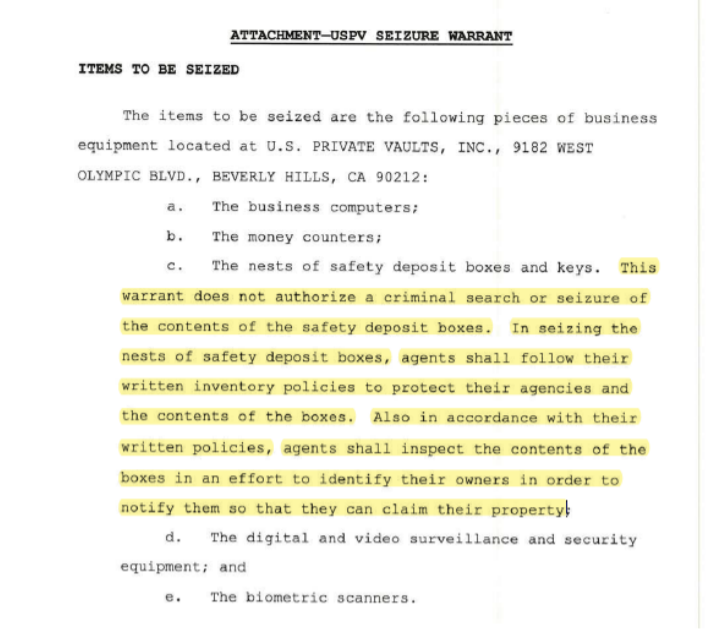

 RSS Feed
RSS Feed





















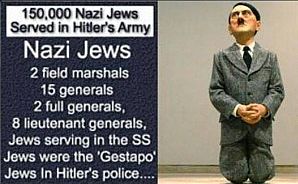
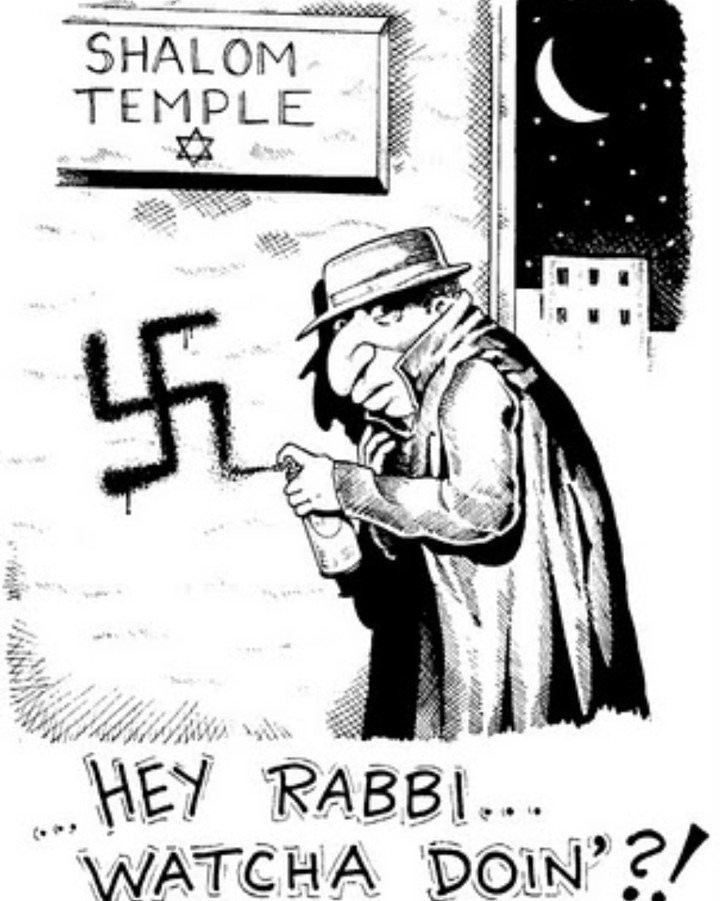


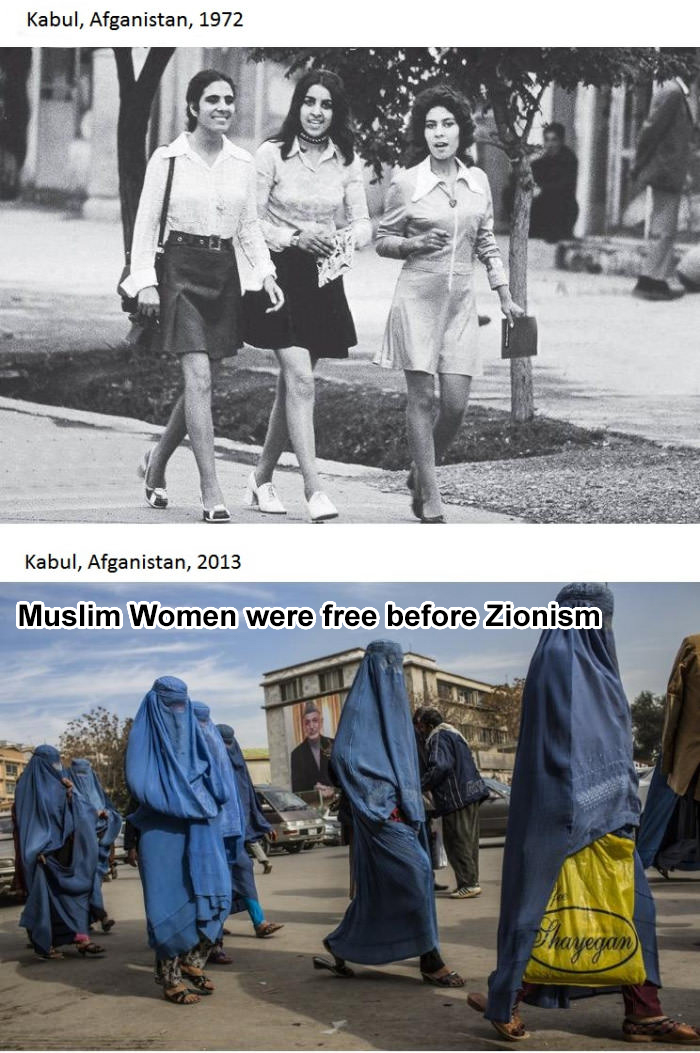

 June 16th, 2021
June 16th, 2021  Awake Goy
Awake Goy 




